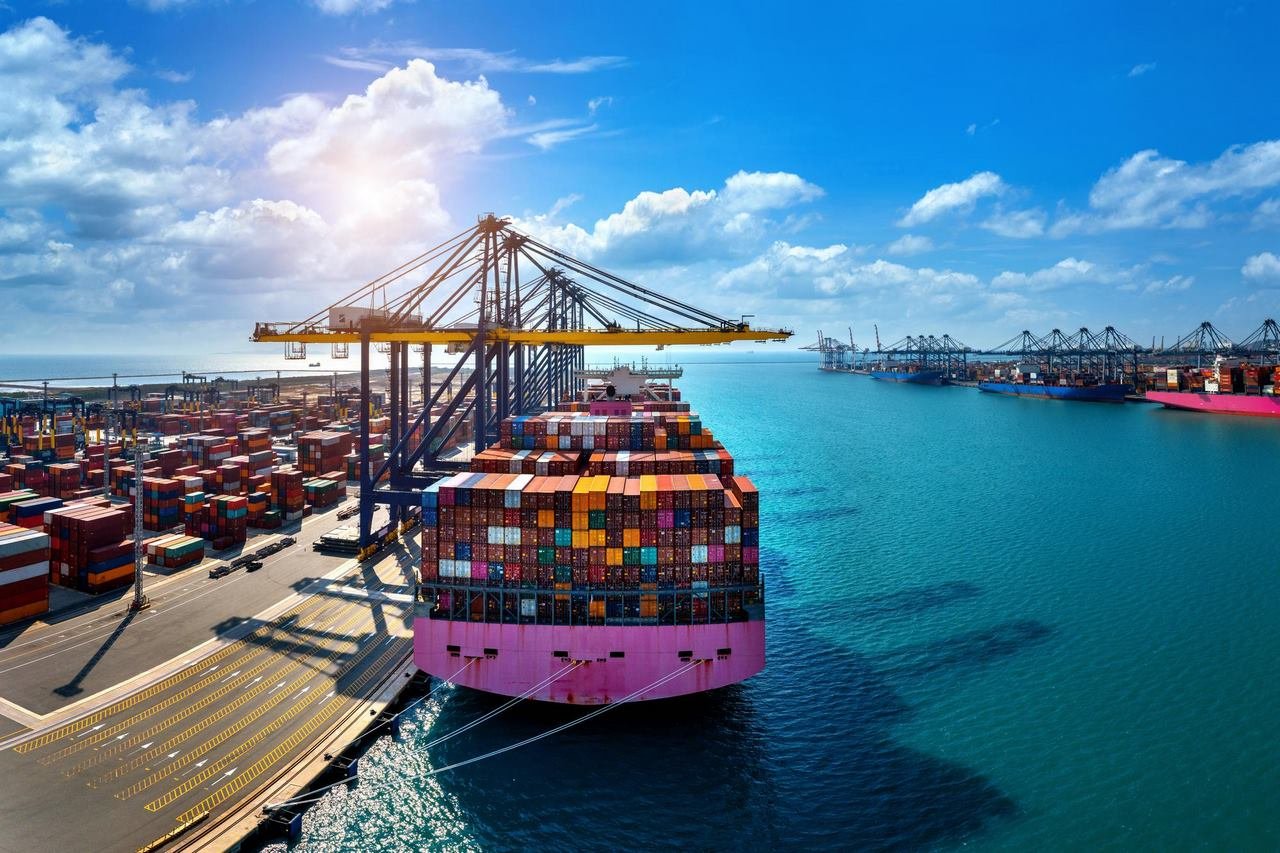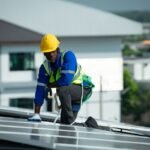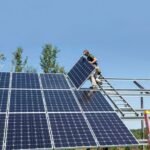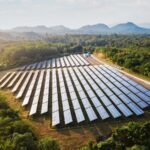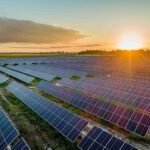Project Report: 20 MW Commercial Solar Plant
Location: GCC Region
Client: Private Industrial Group
Project Status: Completed – Technical Handover
Role: EPC Contractor (Engineering, Procurement, and Construction)
Project Timeline:
Contract Signing: 18 February 2025
Site Mobilization and Land Grading: 25 February 2025
Mounting Structure Installation: 7 March 2025
Solar Panel Installation: 21 March 2025
Testing and Commissioning: 30 April 2025
Commissioned: 18 May 2025
Executive Summary
Steelbridge Export successfully executed a 20 MW photovoltaic (PV) commercial solar power plant for a private industrial client in the GCC region. The project was designed and delivered with a focus on sustainability, operational efficiency, and long-term reliability under harsh desert conditions. The plant aims to significantly reduce the client’s carbon footprint and lower electricity costs through clean energy generation.
As the EPC contractor, Steelbridge Export took full responsibility for engineering design, procurement, construction supervision, quality assurance and control (QA/QC), and grid synchronization. Cutting-edge technologies were employed including high-efficiency heterojunction (HJT) 700W solar panels, Sungrow SG250HX string inverters, and an advanced smart monitoring system to optimize performance and maintain operational integrity over a 30-year service life.
Project Background and Objectives
The client, a leading industrial group operating within the GCC, sought a robust renewable energy solution to reduce dependence on fossil fuels and improve sustainability credentials. The 20 MW PV plant was strategically sized to supply a significant portion of the client’s power demand, reducing grid reliance and contributing to corporate environmental targets aligned with regional green energy policies.
Key project objectives included:
Delivering a high-performance PV system optimized for extreme desert conditions (high temperatures, dust, and sandstorms).
Ensuring long-term durability and minimal maintenance through intelligent design choices such as sand-resistant mounting structures and corrosion-resistant materials.
Achieving grid interconnection compliance with local utility regulations for seamless power injection and monitoring.
Implementing a smart control and monitoring platform to provide real-time operational data and enable predictive maintenance.
Project Scope and EPC Role
Steelbridge Export’s EPC scope encompassed the entire project lifecycle:
Engineering Design:
Finalizing the Bill of Quantities (BOQ) with technical and commercial precision to balance cost and quality.
Structural and electrical design adapted to the site’s environmental parameters to maximize energy yield and system resilience.
Procurement:
Selection and acquisition of premium components, including HJT 700W panels known for superior efficiency and temperature resilience.
Procurement of Sungrow SG250HX string inverters, which provide high conversion efficiency and reliability in desert climates.
Construction:
Site mobilization with thorough land grading and preparation to ensure structural stability.
Installation of heavy-duty, sand-resistant mounting structures engineered to withstand sand abrasion, high wind loads, and thermal cycling.
Precise installation and alignment of solar panels to optimize sun exposure and energy capture.
Quality Assurance and Control (QA/QC):
Rigorous inspection protocols at each construction phase to verify compliance with design and safety standards.
Testing of electrical components, wiring, and connections to prevent faults and enhance reliability.
Commissioning and Grid Synchronization:
Comprehensive performance testing, including insulation resistance tests, I-V curve analysis of panels, and inverter functionality checks.
Coordination with the local grid operator to achieve seamless interconnection and secure operational permits.
Technical Details and Innovations
Photovoltaic Modules
The project deployed heterojunction (HJT) 700W solar panels — a cutting-edge technology that combines crystalline silicon cells with amorphous silicon layers to improve efficiency and reduce temperature-related power losses. These modules are particularly suited for desert environments due to their low temperature coefficients and enhanced resilience to UV exposure and sand abrasion.
Inverter Technology
The Sungrow SG250HX string inverters were chosen for their high conversion efficiencies (>99%), reliability, and compatibility with smart grid solutions. These inverters support advanced functionalities such as remote monitoring, rapid fault detection, and grid support features critical for commercial solar operations.
Mounting Structures
Considering the GCC’s desert environment, mounting structures were custom-engineered with corrosion-resistant galvanized steel and coated with sand-proof finishes. The design accounts for:
High wind resistance to endure seasonal dust storms and gusts.
Thermal expansion compensation to avoid structural fatigue.
Long-term durability guaranteeing a 30-year service life with minimal degradation.
Smart Monitoring Platform
An integrated IoT-enabled monitoring system allows operators to track energy production, inverter status, weather data, and fault alerts in real time. This platform supports predictive maintenance by analyzing performance trends and environmental factors, reducing downtime and optimizing return on investment (ROI).
Construction and Installation Process
Contract Signing & Mobilization: The contract was signed on 18 February 2025, followed by site mobilization and land grading by 25 February. Proper groundwork was essential to ensure a stable foundation, especially given the loose sandy soils common in the region.
Mounting Structure Installation: Completed by 7 March, the heavy-duty mounting frames were erected with precision, securing solar panels in optimal tilt angles to maximize annual yield.
Solar Panel Installation: Installation of the HJT 700W modules commenced immediately, with completion on 21 March. The installation team ensured proper electrical wiring, grounding, and panel spacing to prevent shading and facilitate cleaning.
Testing and Commissioning: Spanning April, this phase included exhaustive inspections, inverter programming, and performance validation. Interconnection procedures were finalized with local utility partners.
Project Commissioning: The system officially began operation on 18 May 2025, delivering clean energy to the industrial client’s facilities.
Environmental and Economic Impact
Carbon Footprint Reduction: By generating approximately 40,000 MWh of clean energy annually, the plant significantly reduces greenhouse gas emissions, equivalent to removing thousands of cars from the road.
Cost Savings: The client benefits from a reduction in electricity bills by displacing grid power with self-generated solar energy, providing a hedge against rising fuel prices.
Sustainability Leadership: This project enhances the client’s ESG (Environmental, Social, and Governance) profile, supporting compliance with regional sustainability initiatives and international carbon reduction commitments.
Challenges and Mitigation
Extreme Weather: Sandstorms and high ambient temperatures presented a significant challenge. Custom structural design and material selection mitigated these risks, ensuring mechanical and electrical components maintain functionality under harsh conditions.
Logistics and Procurement: Sourcing high-efficiency modules and advanced inverters required careful supply chain coordination to meet tight schedules. Early procurement planning and vendor collaboration minimized delays.
Grid Integration: Working closely with the local grid operator was critical to ensure smooth synchronization and regulatory compliance, especially in a region with evolving grid codes for renewable energy.
Conclusion
Steelbridge Export successfully delivered the 20 MW commercial solar plant ahead of schedule, demonstrating excellence in EPC execution under demanding conditions. The project stands as a model for efficient, durable, and sustainable solar power development in desert environments, aligning with GCC countries’ ambitions for clean energy transition.
This installation not only meets the client’s operational and environmental goals but also strengthens Steelbridge Export’s position as a leading EPC contractor for utility-scale solar projects in challenging geographies.
For more information about Steelbridge export’s Other Projects click here.


